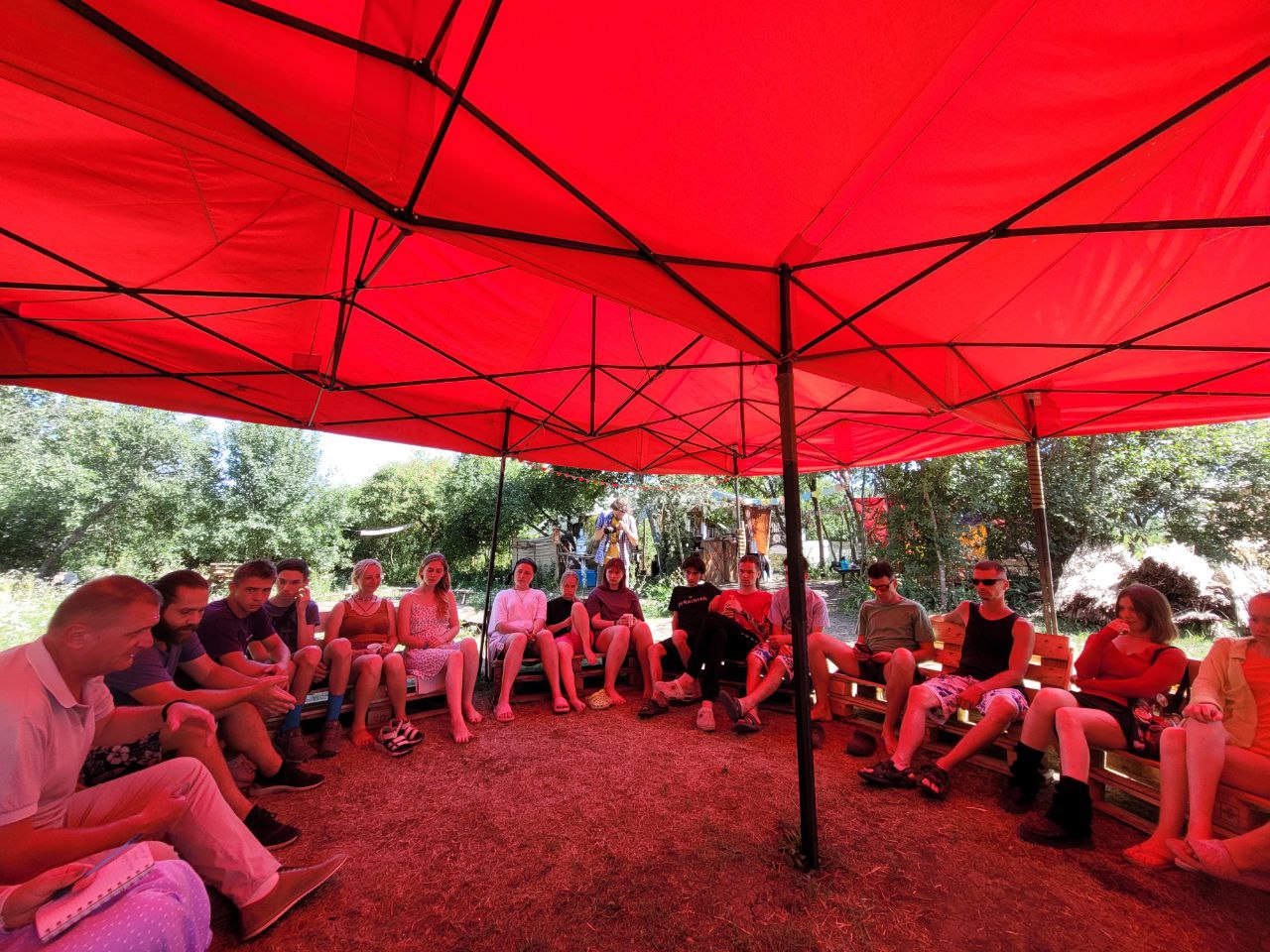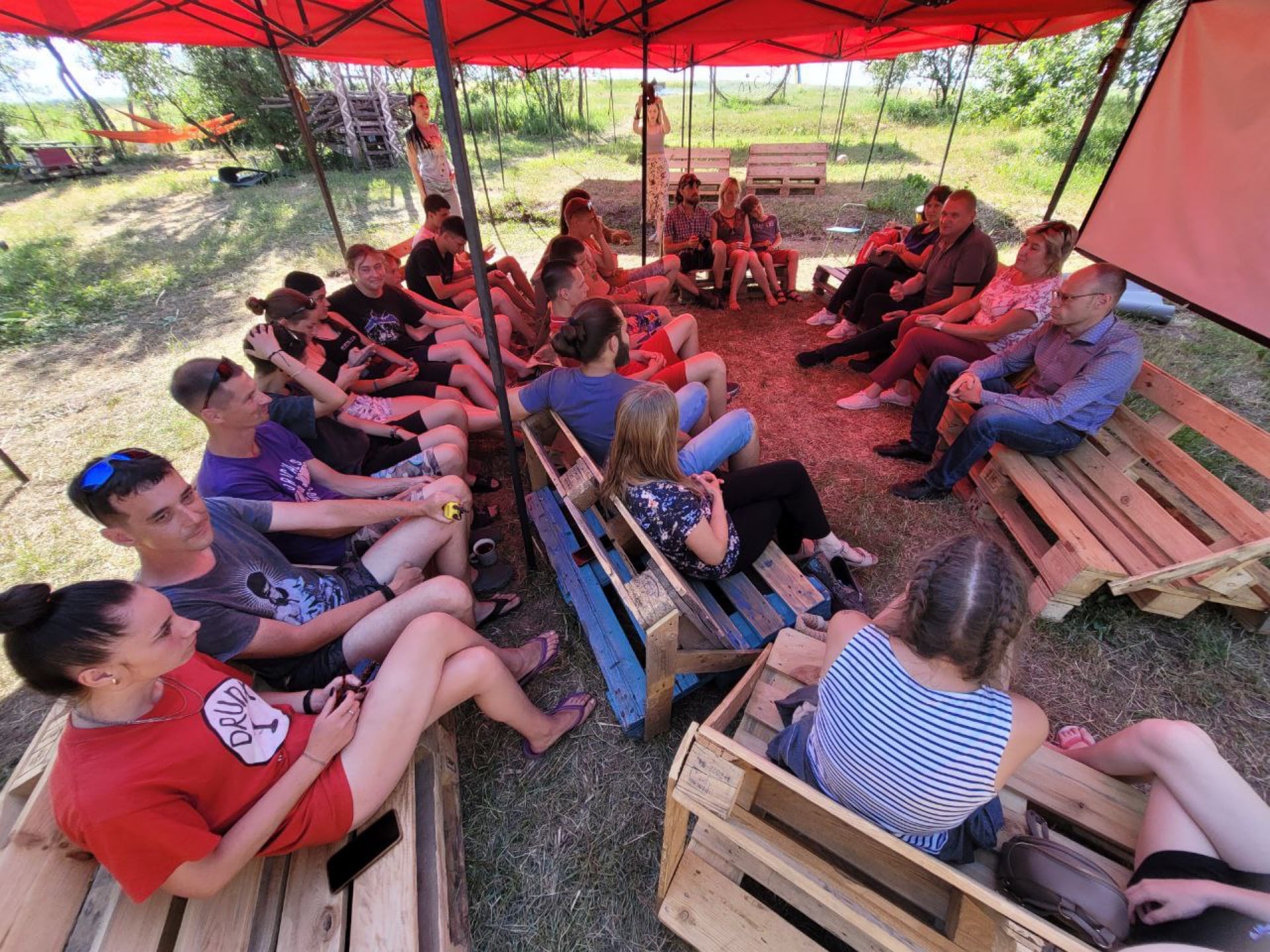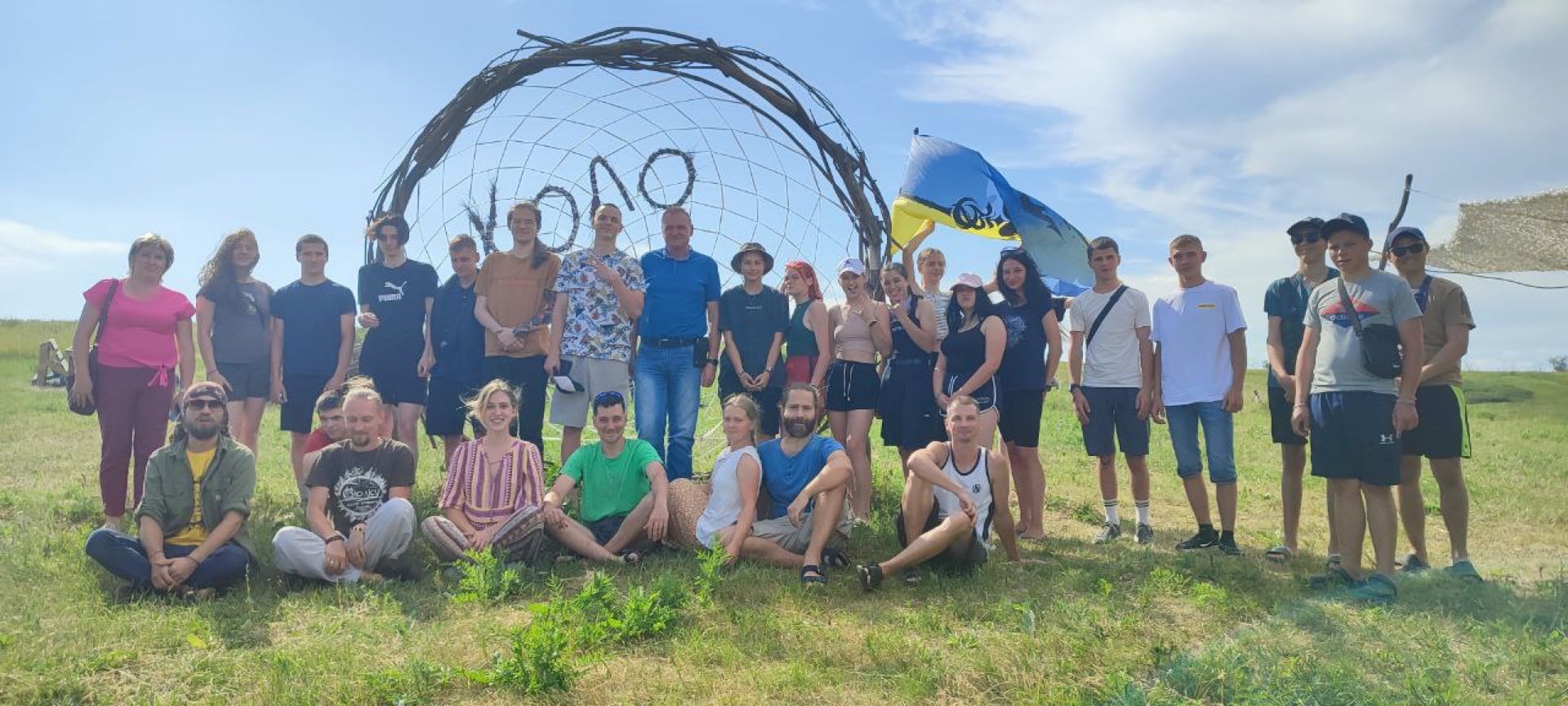ZMINA: Rebuilding - Social Recovery in Frontline and De-occupied Communities: Rebuilding Trust, One Conversation at a Time

In de-occupied villages and frontline communities of eastern Ukraine, the Russian war left more than broken buildings—it fractured trust, silenced conversations, and pushed young people into isolation. For teenagers growing up amid displacement and destruction, the simple act of talking, sharing space, or dreaming about the future often felt impossible.
That was where the KOLO LISU team stepped in. Through the Social Recovery in Frontline and De-Occupied Communities project, they worked to rebuild what violence had taken: connection, confidence, and a sense of belonging. Developed in response to the specific needs of the Oleksiivska and Tsyrkunivska communities in Kharkiv Oblast—both deeply affected by occupation and combat—the programme focused on social reintegration, cultural recovery, and youth civic engagement.
At its heart, the project offered something deceptively simple: a safe space for young people to live, learn, create, and simply be together.
But in these communities, this space was radical. In this interview, the KOLO LISU team reflects on what they had learned, what surprised them most, and why creating a safe space for young people wasn’t a mere healing gesture but an act of rebuilding the country from its roots up.

How did the idea for this project come about? What key challenges in frontline and de-occupied communities were you hoping to address?
The idea emerged when we first hosted children from a de-occupied community at our retreat centre. Later, we welcomed participants from our own community as well. It became immediately clear that the level of socialisation and access to culture had dropped drastically.
The main challenges we observed were the lack of communication and social engagement among teenagers—in some cases, this was almost entirely absent. The war, presence of military, occupation, and destruction left these communities without any ‘third space’—a safe, neutral place for spending time together outside home or school.
Your project focuses on both social and cultural recovery. How are these two dimensions connected in your programme?
We showed the teenagers that socialising isn’t something to fear. That talking, making friends, and spending time together can become the foundation for creativity. As a result, participants started filming short videos, made three short films, and took part in concerts and workshops.
What specific needs in the Oleksiivska and Tsyrkunivska communities helped to shape your programme’s focus?
There was a clear lack of youth-oriented social and cultural activities, a problem that began during the pandemic and became far worse after the full-scale invasion. Rural areas already face difficulties due to lower population density, even in peacetime. That made it harder for teenagers to connect and build community.
We became a place where they could live through a shared experience, feel unity, teamwork, and simply enjoy being young.
One of the core goals was rebuilding social ties among young people. What methods did you use to help them connect and take part in civic initiatives?
The main idea was to spend time together comfortably and safely—to study, walk, cook, rest, and learn side by side. We created a space of joint activity, not just discussion, and that helped form strong bonds and deepen participants’ engagement. They even took part in a meeting with the head of the Oleksiivska community—something that might not seem interesting to teenagers at first glance. But they discussed their futures, chosen professions, and how they could contribute to their communities.
The programme included both educational and creative components: lectures, workshops, yoga, beatmaking, and circus art. How were these selected, and are they also tools for rehabilitation and development?
Most of these formats had already been tested in our retreat centre with adult visitors. Lectures on philosophy and dialogue laid the groundwork for a more open approach to art and creativity. Music training, art therapy, and physical activity proved to be effective tools for recovery and self-expression.
What impact did the KOLO LISU reintegration camp have on participants? Did you notice changes in their emotional state, trust, or motivation?
Absolutely. The participants began communicating outside the project, and by the end of the season many returned as volunteers for our events. Their level of social interaction significantly increased—they now visit each other in different villages and towns, and even meet in the district centre to spend time together.
The project also involved infrastructure recovery and civic education. Could you share specific initiatives or outcomes that had a tangible impact on these communities?
Several youth-led initiative groups were formed. One successfully advocated for extended opening hours at the local gym. Another inspired the local government to begin looking for a space for creative and social activities. Some participants even made the important decision to stay in their home community to study or work—something they hadn’t considered before.

What challenges did you face during the programme? Were there any surprises in working with youth or engaging the communities?
Frankly speaking, everything went quite smoothly—aside from the occasional challenge from nature itself, like storms or extreme heat.
Do you see potential for scaling this project to other regions of Ukraine? What would be needed for that to happen?
Scaling is absolutely possible—but right now, our biggest obstacle is the lack of stable infrastructure at the camp. Expanding would require more engaged and active local stakeholders willing to build and maintain such initiatives in their own communities.
The project is supported by the EU, IZOLYATSIA, Trans Europe Halles, and Malý Berlín. How has international cooperation helped make this possible?
The most important support right now is, of course, resources. The funding provided made this project a reality. In the future, we would love to organise trips to EU countries for our participants to broaden their horizons and expose them to different perspectives.
What were some of the first reactions from participants, parents, and community members? What stood out most or came as a surprise?
Parents were deeply grateful and sent us an outpouring of positive feedback. The local community is eager to collaborate and repeat similar initiatives. The participants themselves have been surprising in the best way—some of them had never communicated with peers or people around them before, but after returning from the camp, they felt like completely different people with new possibilities and confidence.
How do you measure the success of this project? Is it about the number of participants, their personal growth, or changes in the community?
For us, success is measured in personal stories—the real-life changes we see in the participants. Of course, numbers matter too. We feel we’ve created a new local community, where every participant wants to stay involved in future initiatives or even launch their own.
Do you plan to continue this initiative in the future? If so, in what format?
The war presents serious challenges, but we’ll do everything we can to keep going. Right now, we’re developing a new concept: the CampFestival, where each season of the camp ends with a small community festival led by the participants themselves.
If you could communicate one core message through this project, what would it be?
Every child’s life is an entire universe—a universe that needs comfortable conditions to grow and unfold, a safe space for creativity and self-expression, and equal opportunities to thrive.
Because who, if not children, are the future of our country, our people, and the world as a whole? What we invest in their development today matters deeply. Sadly, home and family are not always that safe place. That’s why we must create it—for those who lost it, or never had it to begin with.

Author: Mariia Akhromieieva
ZMINA: Rebuilding is a project co-funded by the EU Creative Europe Programme under a dedicated call for proposals to support Ukrainian displaced people and the Ukrainian Cultural and Creative Sectors. The project is a cooperation between IZOLYATSIA (UA), Trans Europe Halles (SE) and Malý Berlín (SK).